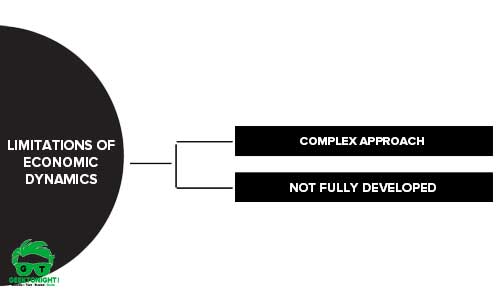The economic theory is divided into two main branches, viz., economic statics and economic dynamics. These terms were first introduced by August Comte in social sciences. Stuart Mill made use of these concepts in economics. These concepts were further explained by Ragnar Frisch.
Table of Content
Economic Statics Definition
Prof. Kuznets defines Static economics deals with relations and processes on the assumption of uniformity and persistence of either the absolute or relative economic quantities involved.
What is Economic statics?
Static economics is a study of factors that are not subject to change. Thus, it can be said that there is a state of equilibrium in static economics.
According to Clark, the following are static factors:
- Population size and its composition
- Quantity of capital remains constant
- Production techniques
- Working of business firms
- Habits, tastes, and fashions of people
Static economics is characterised by the absence of uncertainty.
Economic statics are based on assumptions, such as existence of perfect competition, perfect knowledge, and perfect mobility of resources.
Also Read: What is Economics?
Importance of Economic statics
Following are the importance of static economics:
- Simple and easy method of economic analysis
- Basis of the principle of free trade
- Robbins’ definition is also the subject matter
- Gives knowledge of the conditions of equilibrium
- Basis of dynamic analysis
- Keynes theory is also static in nature

Simple and easy method of economic analysis
It is easier to understand and economical in thought.
Basis of the principle of free trade
The principle of free trade which was favoured by classical economists like Adam Smith is an integral part of static economics.
Robbins’ definition is also the subject matter
Robbins defined economics as a science which studies human behaviour as a relationship between ends and scarce means which have alternative uses. This definition is a part of static economics.
Gives knowledge of the conditions of equilibrium
It tells that price is determined where demand for the supply of goods is equal. Similarly, income is in equilibrium where planned investment and planned savings are equal.
Basis of dynamic analysis
Prof. Hicks has pointed out that static economics occupies an important role because it gives a lot of information for the proper understanding of dynamic economics. We can understand the path of equilibrium only after studying the conditions of equilibrium.
Keynes theory is also static in nature
It shows only a once-over change of variables like consumption function, multiplier, liquidity preference, etc. The effect of once-over change of economic valuables is studied in static economics.
Also Read: What is Business Economics
Limitations of Economic Statics
Following are the Limitations of Economic Statics:
- Constancy of Variables
- Unrealistic Assumptions
- Ignores Time Element
- Does not explain the Path of Equilibrium

Constancy of Variables
Prof. Clark and Stigler have assumed many economic variables as constant. They are population, quantity of capital, natural resources, techniques of production, habits and fashions, etc. We know that these economic factors change in reality. So static economic analysis is far from reality.
Unrealistic Assumptions
Static analysis is based on unreal assumptions like perfect competition, perfect mobility, perfect knowledge, full employment, etc. These assumptions are far from the real world. That is why Prof. Hicks said, “Stationary state in the end is nothing but an evasion.”
Ignores Time Element
Another shortcoming of the static analysis is that it studies a timeless economy. But in reality, many changes occur with the passage of time. Therefore, it gives a narrow explanation of economic problems.
Does not explain the Path of Equilibrium
Static analysis explains only the final state of equilibrium. And comparative statics compares only the two final equilibrium states. It does not show how this new equilibrium has been reached. Though comparative static economic analysis has many drawbacks, yet it occupies an important role in economics.
Many important classical laws are a part of static economic analysis. Moreover, it is a simple type of economic analysis. It is easier to understand
Also Read: Law of Demand
Economic Dynamics Definition
Prof. Harrods defines Economic dynamic is the study of an economy in which rates of output are changing.
What is Economic Dynamics?
Economic dynamics is a study of changes in the economic system.
The features of dynamic economy as provided by Prof. Clark are described as follows:
- There is growth in the population size
- There is growth in the capital quantity
- There is improvement in modes of production
- Many changes occur in organisations.
- Efficient organisations take over inefficient ones.
- Wants of people increase leading to changes in the habits of people, fashion trends, and customs.
In economic dynamics, an economic system adjusts itself to the various changes over a period of time.
Also Read: Law of Supply
Importance of Economic Dynamics
Following are the importance of Economic Dynamics:
- Study of Time Element
- Trade Cycles
- Basis of many Economic Theories
- More Flexible Approach
- Realistic Approach

Study of Time Element
Time element occupies an important role in dynamic economics. Economic problems concerning continuous change of economic variables and path of change can be studied only in dynamic economics.
Trade Cycles
Theories of trade cycles have been advocated only through the introduction of dynamic economics. Theories of trade cycles are based on dynamic economics as they refer to the fluctuations of the different time periods.
Basis of many Economic Theories
Dynamic economics has an important place in economics because many economic theories are based on it. For example, saving and investment theory, theory of interest, effect of time element in price determination, etc. are based on dynamic economics.
More Flexible Approach
Dynamic analysis is more flexible. Models regarding the possibilities of economic change can be development in dynamic analysis. That is why it has been found a useful mode of study. Dynamic economics is also useful in solving the problems of economic planning, economic growth and trade cycles.
Realistic Approach
Dynamic economic analysis is nearer to the reality. In a real world, economic variables like national income, consumption, etc. change irregularly and uncertainly.
Moreover, economic variables of the previous period also affect the present economy. And time clement occupies an important role in economic analysis.
Also Read: What is Demand in Economics
Limitations of Economic Dynamics
Following are the limitations of economic dynamics:

Complex Approach
Dynamic economic analysis is a complex approach for the study of economic variables because it is based on time element.
To find solutions of various problems, we have to make use of mathematics and economics which is beyond the understanding of a common man.
Not Fully Developed
Many economists like Samuelson and Harrod, have developed dynamic approach of economic analysis. They have developed their theories through dynamic analysis.
But this mode of economic analysis has not been fully developed. The reason is that factors affecting economic variables change very soon. Dynamic approach is not developing at the speed at which economic factors change.
Also Read: What is Market Failure
Business Economics Tutorial
(Click on Topic to Read)
Go On, Share article with Friends
Did we miss something in Business Economics Tutorial? Come on! Tell us what you think about our article on Economic Statics and Dynamics | Business Economics in the comments section.
Business Economics Tutorial
(Click on Topic to Read)













